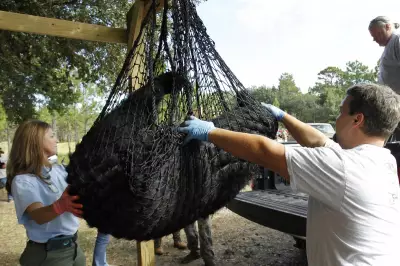
As winter's chill begins to loosen its grip, seasoned gardeners know this is the critical window for one of the most important gardening tasks of the year. Getting your pruning right now can mean the difference between a disappointing season and a spectacular display of blooms and bounty.
The Golden Rules of Winter Pruning
Before you grab those secateurs, remember these essential guidelines. Always use sharp, clean tools to make precise cuts and prevent disease spread. Aim for dry days to reduce infection risk, and step back frequently to assess your progress. Most importantly, know your plant's specific needs - what works for one might harm another.
The Four Plants That Demand Your Attention Now
1. Roses - The Classic Beauties
February is prime time for rose pruning. Cut back shrub roses by about half to two-thirds, removing dead, diseased or crossing branches. Make your cuts at a 45-degree angle just above an outward-facing bud to encourage an open, vase-shaped structure that allows air circulation and prevents disease.
2. Wisteria - The Dramatic Climber
This stunning climber needs careful winter attention to ensure those magnificent purple cascades later in spring. Cut back summer side-shoots to just 2-3 buds from the main framework. This concentrates the plant's energy into flower production rather than excessive leafy growth.
3. Apple Trees - The Fruitful Investment
Dormant season pruning is crucial for healthy, productive apple trees. Focus on creating an open goblet shape that allows sunlight to reach developing fruits. Remove any dead, damaged or diseased wood, along with branches that cross or rub against each other. Remember: well-pruned trees mean bigger, better apples come autumn.
4. Hydrangeas - Know Your Variety
Hydrangea pruning depends entirely on the type you're growing. For mophead and lacecap varieties, simply remove the old flower heads, cutting back to the first pair of strong buds. Paniculata and arborescens types can be cut back harder to strong buds lower down the stems.
Why Timing is Everything
Pruning during dormancy encourages vigorous spring growth when the plant's energy isn't diverted to leaf production. It also gives you a clear view of the plant's structure, allowing for more strategic cuts. Plus, with no leaves present, diseases have fewer opportunities to enter through fresh wounds.
Common Pruning Mistakes to Avoid
- Over-pruning: Removing more than one-third of the plant can cause stress and reduce flowering
- Ragged cuts: Always use sharp tools for clean wounds that heal quickly
- Wrong timing: Pruning spring-flowering shrubs now could mean losing this year's display
- Ignoring the shape: Consider the plant's natural form rather than forcing an unnatural shape
By giving these four key plants the attention they need this month, you're setting the stage for a gardening season filled with vibrant colour, abundant harvests and the satisfaction that comes from getting the fundamentals right. Your future self - and your garden - will thank you for it.





